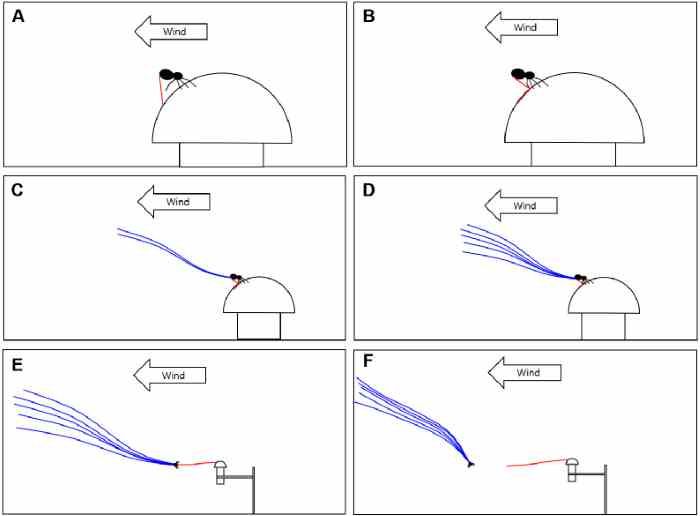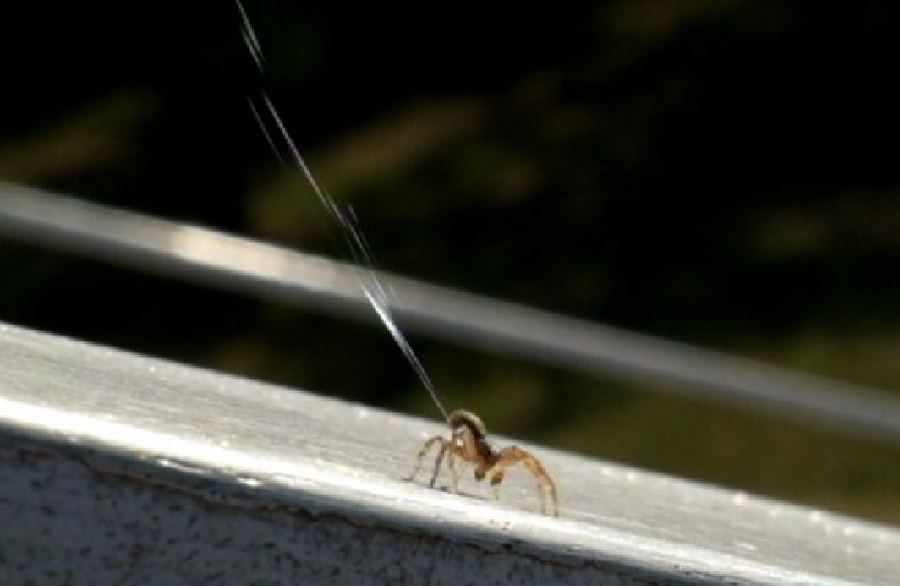How spiders fly? Scientists tested their astonishing abilities
Spiders use their prehensile glands not only to weave hunting webs, i.e. the popular webs. Some species of spiders spin something like a sail with which they can travel very long distances.
Spinning thread is used by spiders for many purposesow. They primarily form nets from it, in which theyore they catch their prey. They will also entwine their prey with them, ktorą are going to consume at another time, they weave cocoons in which theorych they protect their eggs from predators and even use it to fly.
Spiders spin something like a sail or kite from their threads, in which theyory catch gusts of wind. In this wayob can travel very long distances. However, until now, the mechanisms used by spiders to fly were not clear.
To find out howob flying spiders, a complexoł scientistsow from Berlin looked at 14 spiders Xysticus of the family Thomisidae – oblique. This is a large family of nearly 2,200 speciesow. They move sideways, hence the English name crab spider. Researchers have conducted two studies with flying spiders.
The results of the observations were published on „bioRxiv”.
In the first they placed each of the spiderow on a mushroom-shaped platform exposed to natural windsow. In this wayob they observed the spider’s behavior and its preparation for flight. The experiment took place in the same Berlin park in which theorym once aviation pioneer Otto Lilienthal tested gliders. In a separate experiment, scientists placed spiders in a wind tunnel where they could control wind speed and temperature.
The behavior of the spideroin indicates a prudent action. It’s not randomly releasing webs hoping to catch wind in their sails. Spiders raised their forelimbs immediately before flighto¿a. There are tiny hairs on them. According to scientistsoin they evaluated in this wayob the force and direction of the wind. The test lasted from 5 to 8 seconds.
The researchers noted that on cold and windy days the spiders gave up flying. However, when conditions were favorable – a warm, gentle breeze of no more than 3 meters per second – The spiders raised their abdomen and shot up to 60 threads into the air, with which theyorych formed trojangular shape resembling a sail or kite, ktory floated them towards the sky. On top of that, one of the threads they use is to anchor themselves to a launch site should something go wrong. In this wayob can easily wrocate to the same place and sprobować restart.

The study is the first one to show whichore shows that spiders, like any good aviator, carefully assess wind conditions before taking off.
The aerial skills of the spiderow have been known to scientists for a long time. At the end of 2016, Argentine scientists conducted a study, with ktorych shows that one of the species ofoIn a spider of the motile family (Anyphaenidae) colonized the remote island of Robinson Crusoe. For more on this topic, see Flying spiders? Yes, they exist and have colonized an island in the Pacific Ocean.

